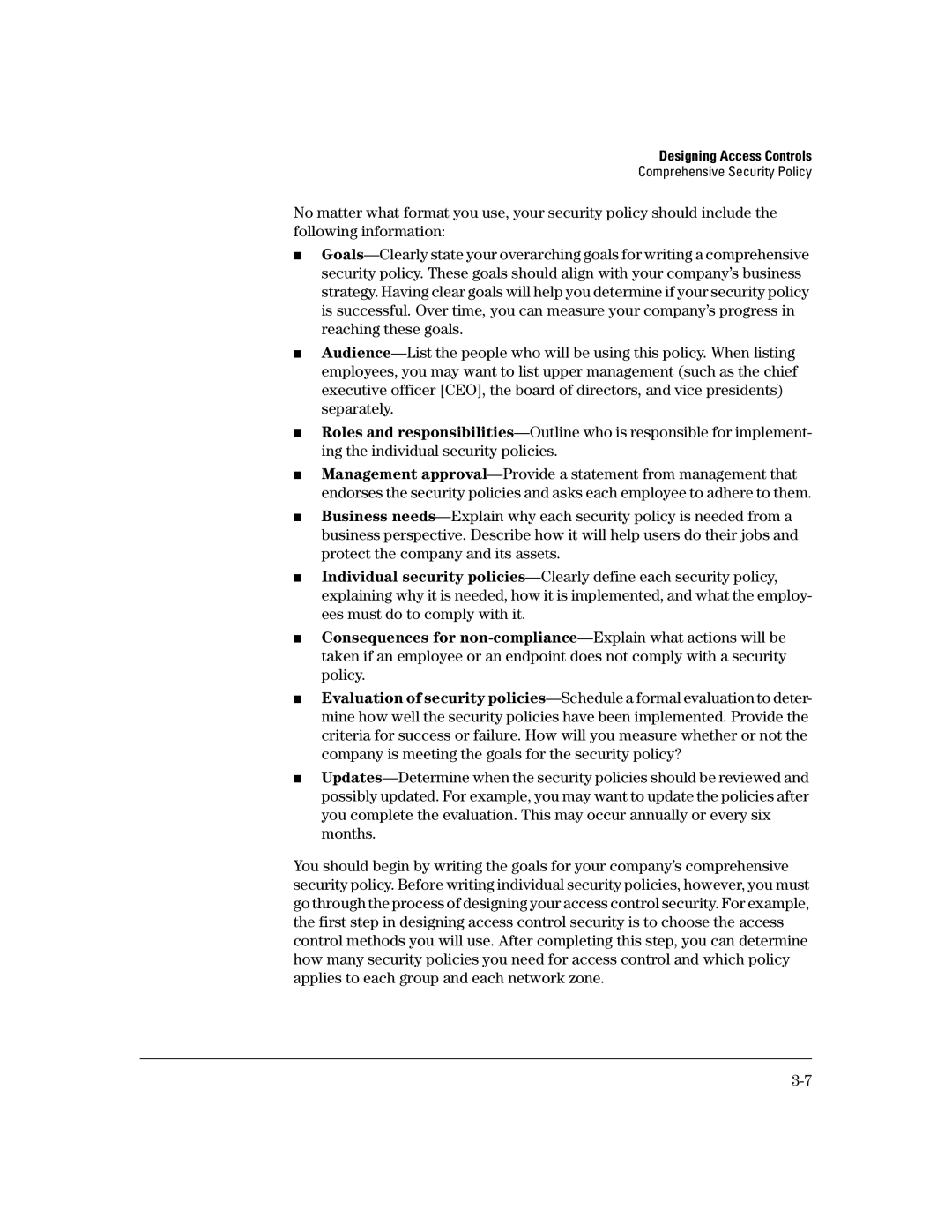Designing Access Controls
Comprehensive Security Policy
No matter what format you use, your security policy should include the following information:
■
■
■
■
■
Roles and
Management
Business
■Individual security
■Consequences for
■Evaluation of security
■
You should begin by writing the goals for your company’s comprehensive security policy. Before writing individual security policies, however, you must go through the process of designing your access control security. For example, the first step in designing access control security is to choose the access control methods you will use. After completing this step, you can determine how many security policies you need for access control and which policy applies to each group and each network zone.
